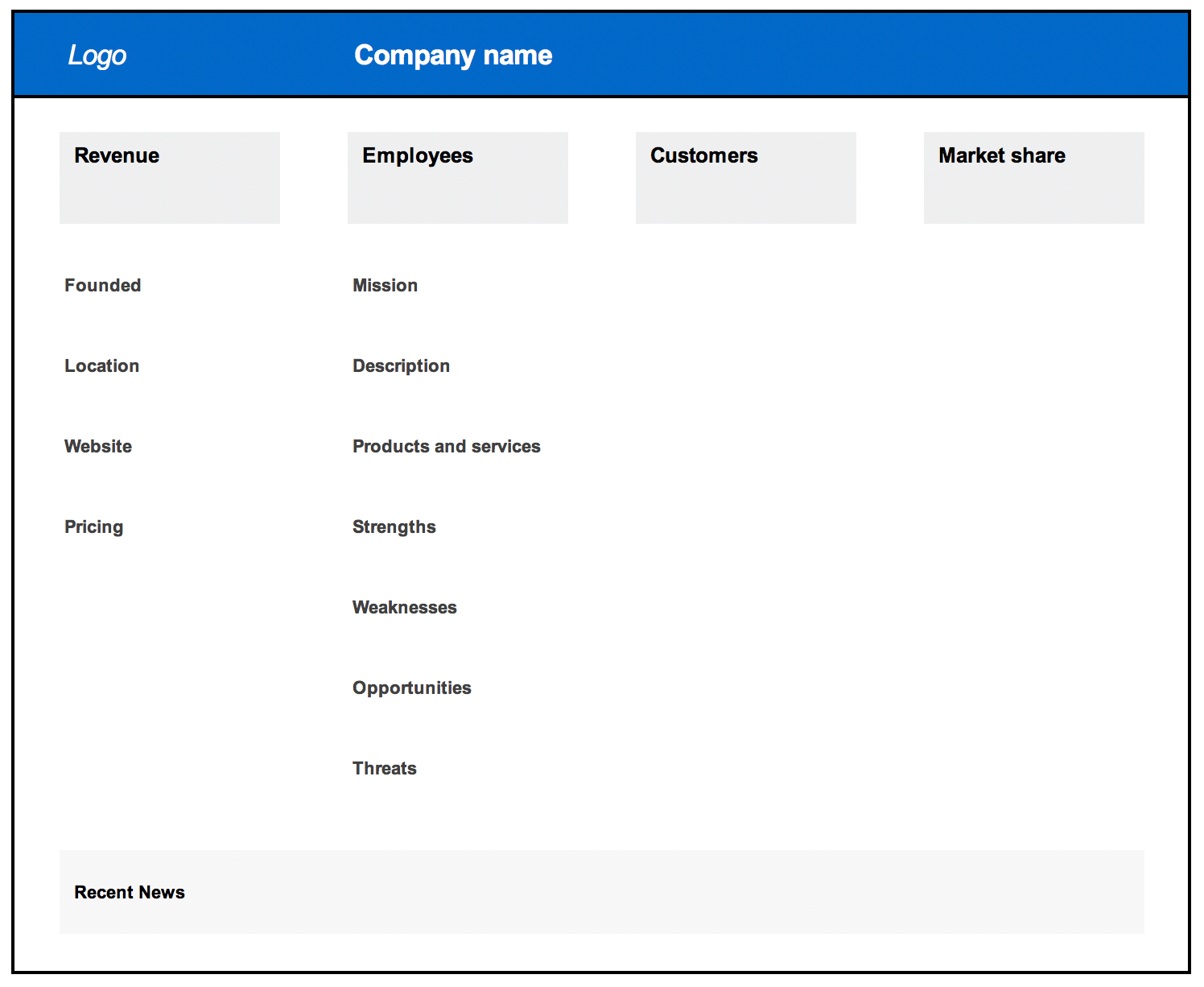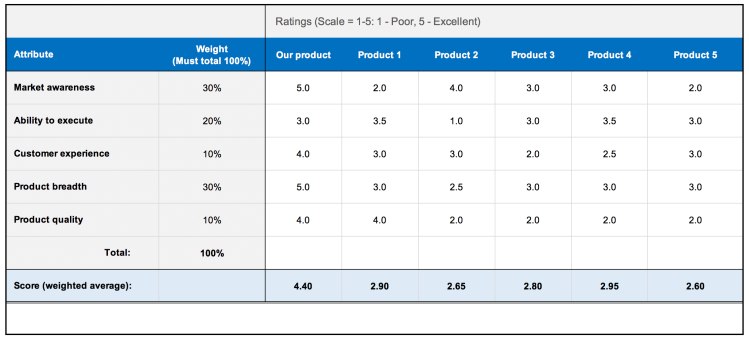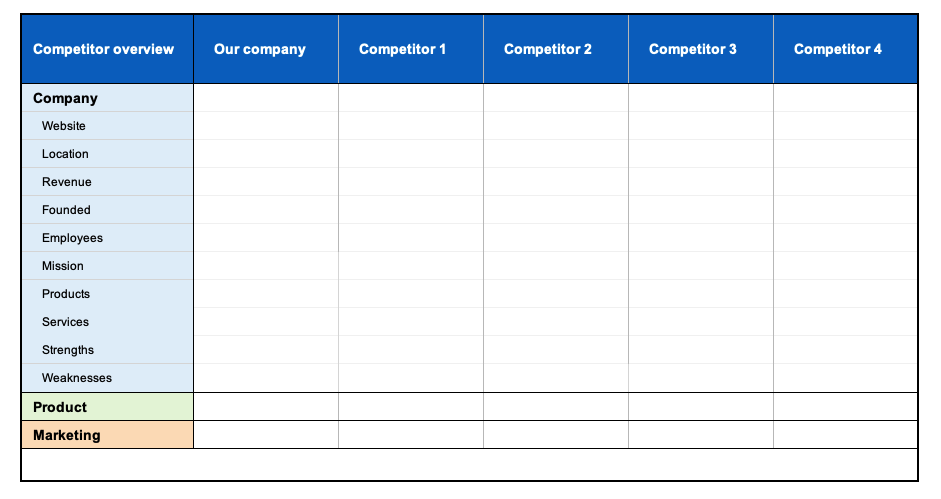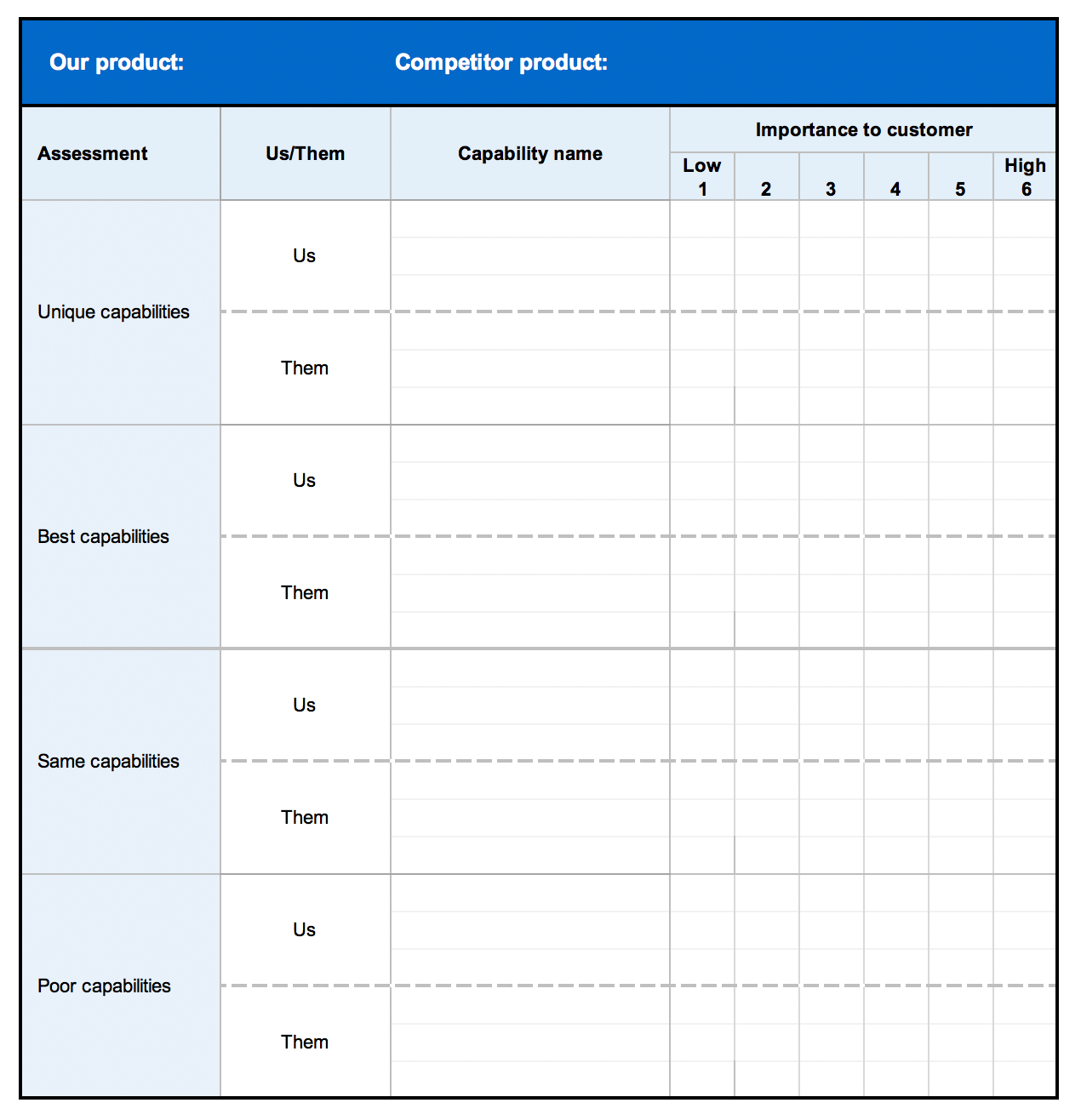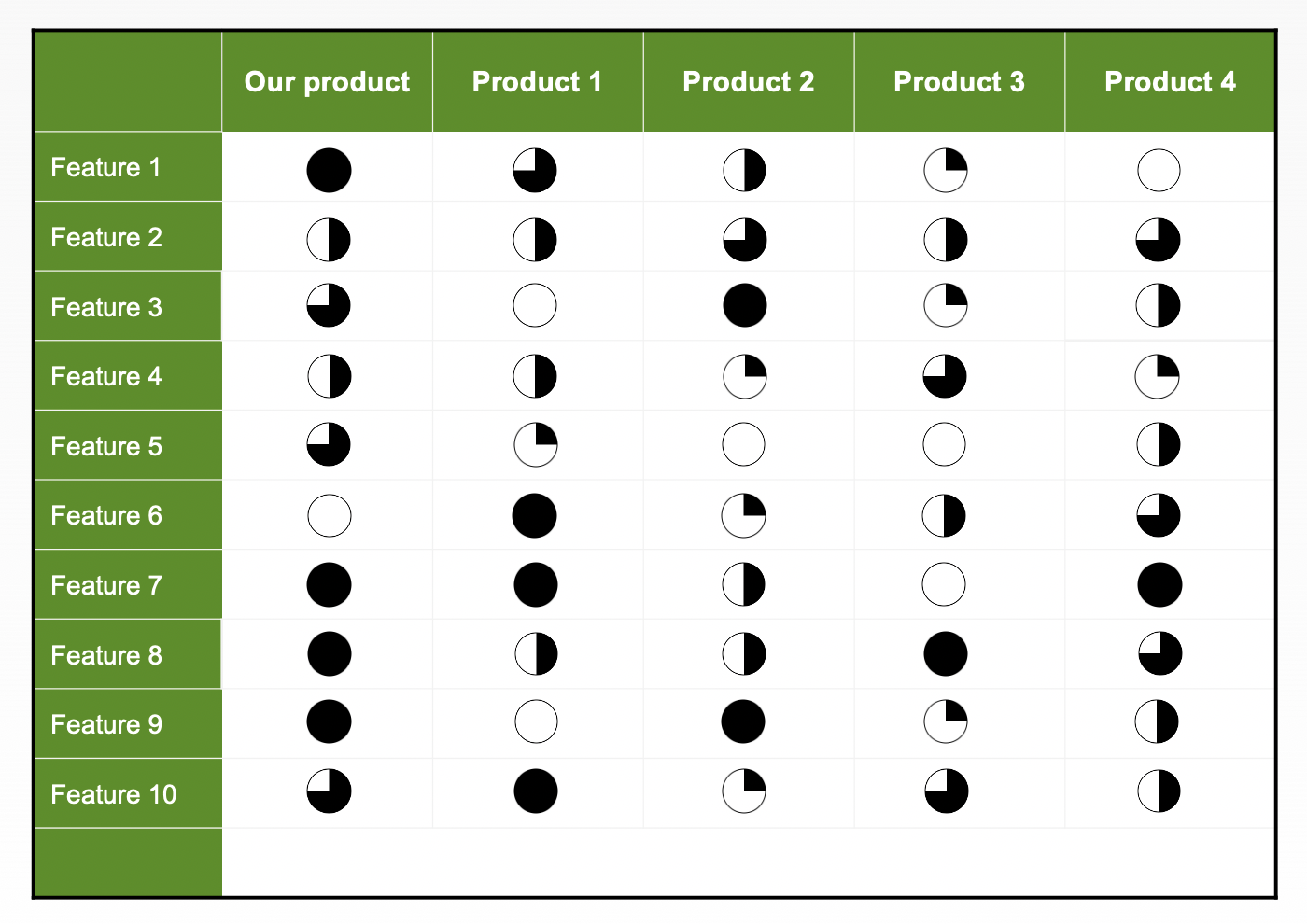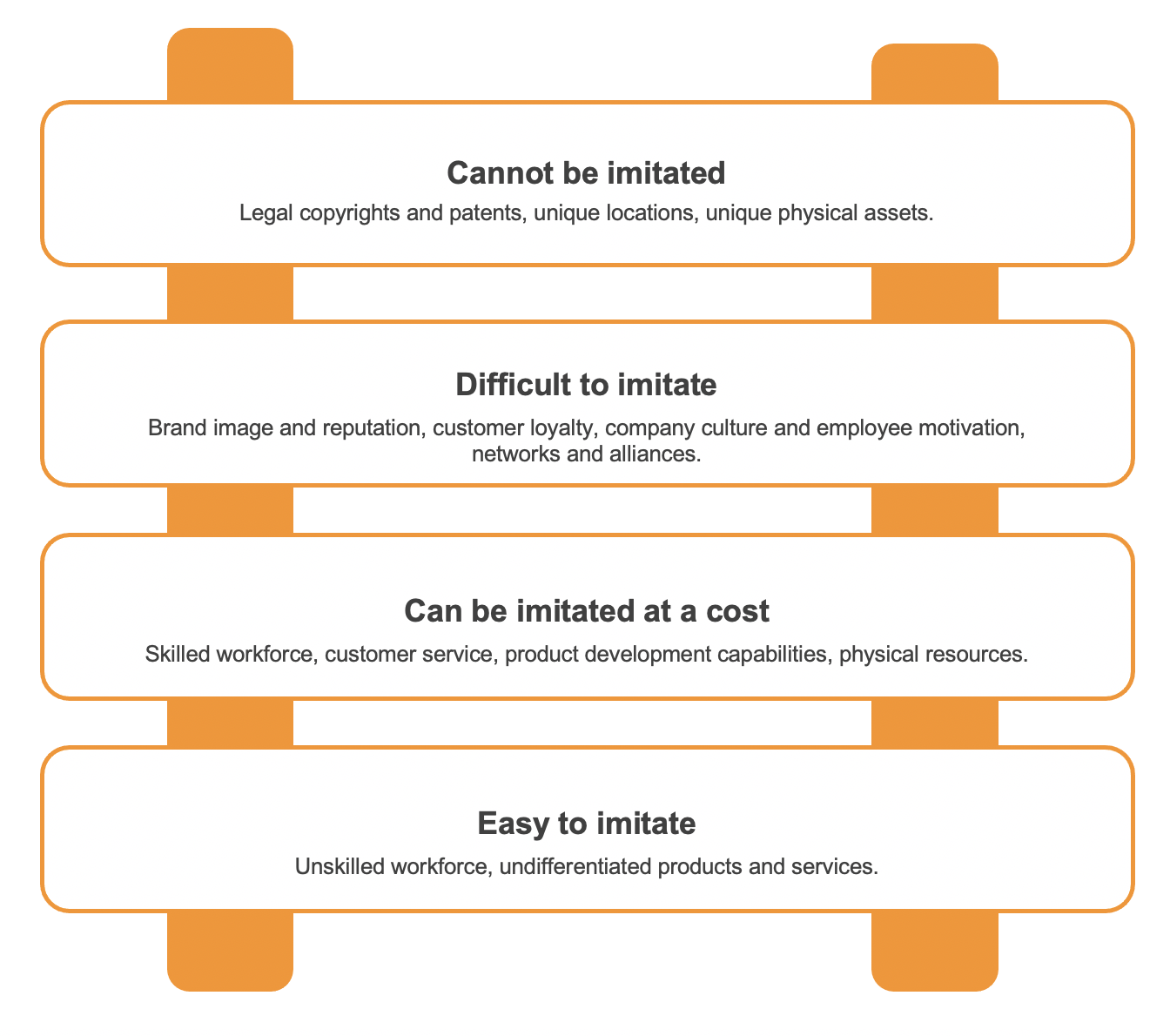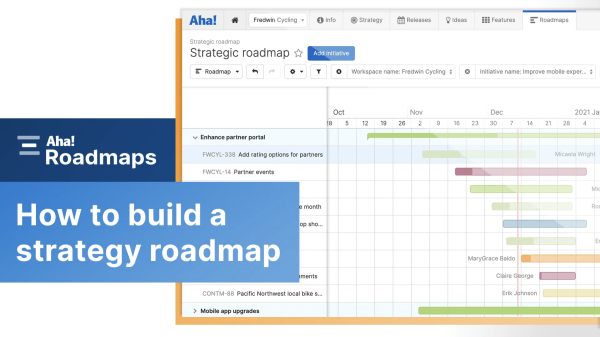9 competitor analysis templates (with example data)
Last updated: March 2024
Is competition always a good thing? It can certainly be a motivating factor — pushing you to think more creatively, stretch your limits, and keep growing. This is especially true for product managers. You are constantly working to differentiate your offering from others in the market and deliver greater customer value.
Gaining a deep understanding of your competitors is vital for product success and innovation. Strong competitive research and analysis can help you identify exciting opportunities and safeguard against potential threats. It also informs how you define your product strategy and address customer needs in a better way than competitors.
But understanding your competition takes real effort. A meaningful competitor analysis goes beyond listing out basic offerings and pricing structures — it requires a firm grasp of your market, the competitive landscape within it, and the one-of-a-kind value your product provides.
Done well, competitive research will become an integral piece of your product planning process. But it is important to note that competitors should only help inform your product's trajectory, not dictate it. Instead of making decisions about your product based only on getting ahead of the competition, use your research in conjunction with what you know is best for your customers and your company. What your customers want and need is your top priority — this is what will ultimately help you deliver a lovable product.
The free Excel and PowerPoint competitive analysis templates in this guide make it easy to organize and communicate your competitive research. They are a huge time-saver. That said, Excel and PowerPoint templates require manual updates and are often disconnected from your daily product work. If you want to quickly capture and share competitive information, use a lightweight whiteboard template from the Aha! template library. If you are ready to go deeper, building product roadmaps, defining go-to-market strategies, and feature prioritization, try Aha! Roadmaps.
Use the template below — with a free trial.
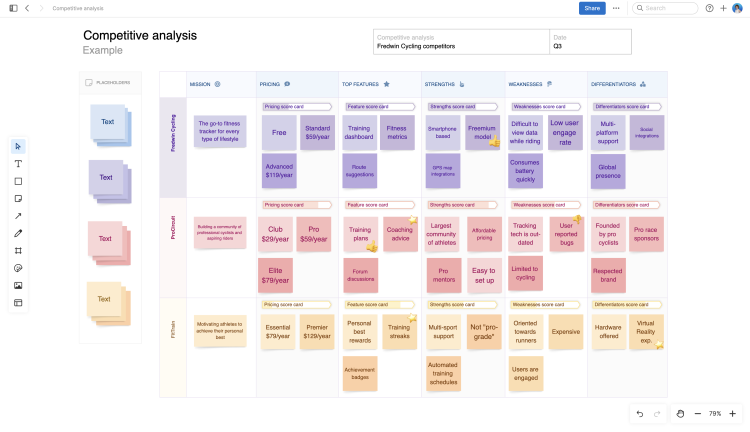
Jump ahead to any section below:
What is a competitor analysis?
A competitor analysis is a useful tool to understand the market landscape. This helps you identify alternative ways prospective customers can solve their problems. It is also a great way to evaluate other vendors' strategies so you can assess their strengths and weaknesses. This gives you important insights into how other companies are trying to provide value to your target buyers.
Your competitive analysis should answer these core questions:
Who are the other companies vying for customers in your market?
What products and services do they offer?
What is each competitor’s market share?
What are their strengths and weaknesses?
How do your own products and services compare?
How can you differentiate your products and services?
Product and marketing teams use these findings to inform their strategic plans and determine what will make their product a success. It allows you to formulate an approach that considers the strengths and weaknesses of your own offering relative to the competition.
Related:
What are the types of competitor analysis?
There are many different types of competitor analysis. When considering which template to use, it is important to think about the factors you want to analyze and how you will share your findings.
Listed below are the pre-built examples included in this guide.
Analysis type | Description |
Highlight how your product stacks up against competitors' with an overarching analysis of strengths, weaknesses, features, differentiators, and more. | |
See where your company fits in the overall market landscape and position alternative vendors based on their strengths and weaknesses. | |
Capture key information about each competitor, including important details about the company, product, and features. | |
Assess your competitors using a set of scoring metrics and weigh the relative importance of each attribute. | |
Gather intelligence about each competitor and compare your findings to identify their relative strengths and weaknesses. | |
Compare your unique, best, same, and poor capabilities against your competitors and consider their importance to customers. | |
Create a detailed comparison of the features included in each product and use Harvey Balls to show the degree to which they are complete. | |
Determine how easily your competitors can imitate your key value so you can identify the strengths and weaknesses of your offering and market position. | |
Analyze the basic, expected, augmented, and potential benefits of your product to define a strategy that sets you apart from the competition. |
Surpass your competition by using these carefully selected templates to see where your product fits in the market.
How to perform a competitive analysis
Conducting a competitive analysis pushes you to consider all options available to your prospective customers. Through this research, you can ensure product differentiation and establish a sustainable competitive advantage.
Before we dig into the templates you can use to display these valuable findings, here are the basic steps involved in performing a competitive analysis.
Establish a list of direct and indirect competitors
Direct competitors offer a similar type of product within the same market. Indirect competitors offer a different type of product that serves the same need.
Research your identified competitors
Compile information by exploring the company's website, customer and product reviews, social media, financial information, sales collateral, videos, and press releases.
Test the product yourself
Sign up for a free trial or tour of the product. Experiment with the functionality and test run the features.
Document the user experience
Study the product's UX and empathize with the customer. Go through the steps and identify usability pros and cons.
Identify your competitor's vision and positioning
What do your competitors aim to achieve? Why does their product exist? How do they describe their offering in the market?
Define the differentiators
What distinguishes their product in the market? How do they stand out? Where do they fall short?
Create a competitor analysis report
The templates below provide a great starting point. Share your report with the product, sales, and marketing teams.
Maintain & update report
Make this process part of your strategic product planning. Assign a point person to keep the report updated throughout the year.
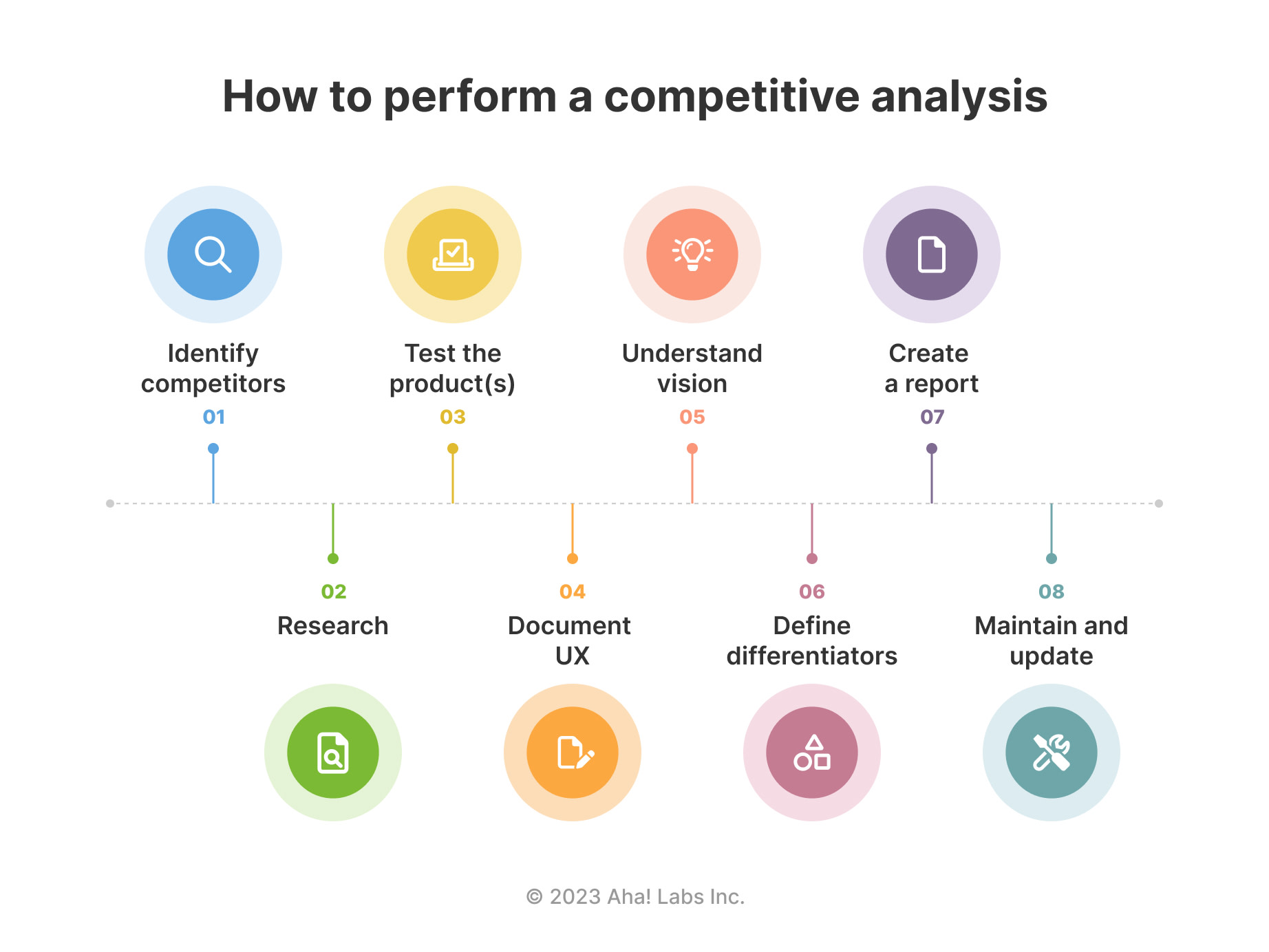
Related:
Whiteboard template
This whiteboard template in Aha! software lets you conduct a detailed competitor analysis in a streamlined view — so you organize key observations about multiple competitors in one space. Use sticky notes and sliding scorecards to help uncover opportunities to make your product stand out. Plus, since it is a whiteboard template, this one is great for collaborating live with your team.

Aha! Roadmaps competitive analysis template
Use the Aha! Roadmaps competitive analysis template to track key competitors across your workspace hierarchy. Quickly capture important information including revenue, workforce, and product positioning. Then create a competitor chart — showing exactly how your products stack up — and share competitor profiles in an Aha! Roadmaps presentation. Maintaining competitor profiles in the same tool you use for roadmapping helps integrate strategic thinking into your planning process.
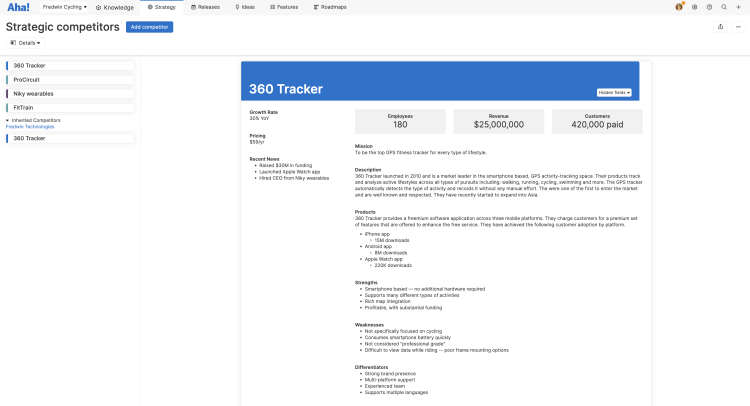
Competitive landscape template
This PowerPoint template makes it easy to visualize your competitors in a single view. It is the perfect way to position the key players in the market and how they relate to each other. It is useful, for example, when you need to provide an overview of your competition to executives or advisory boards. You can easily customize the titles for each quadrant and change the values on the x and y axis to align with how your company assesses the market.
Competitor profile template
This Excel template makes it easy to build a detailed profile for each of your main competitors. It is great for capturing a wide range of information about their organization, customers, and products.
A well-defined competitor profile gives internal teams — such as marketing and sales — a better understanding of who they are up against. It provides insights into the strengths and weaknesses of each competitor so the team can position their own offering as the better solution to prospective customers.
Competitor scorecard template
Create a competitor scorecard to rank your competitors and measure the threats they represent to your business. It is a great way to assess your competitors using a consistent set of scoring metrics.
You decide which attributes you want to score. For example, you can assess organizational attributes, such as market awareness or ability to execute. Or you can rank product attributes, such as ease of use, unique features, and quality. This Excel template also provides a weighted scoring approach so you can rank the relative importance of each attribute from the customer's perspective.
Competitor overview template
Use this worksheet to gather important information about all of your competitors in one place. It allows you to capture details about each company, product, and their go-to-market strategies.
This Excel template is a useful tool to organize your research so you can easily find and access the information you need. It serves as the foundation of your competitive analysis and provides a consistent way to collect and analyze key data.
Capability analysis
A capability analysis allows you to assess how your product and team compares to a competitor's. It is a great way to analyze the collective skills, abilities, expertise, and even how product features match up. This Excel template helps you define what your organization is good at and where you can improve. It also lets you rank the relative importance of each capability to customers. This keeps you focused on how effectively you are solving the customer's problem.
Features analysis template
Use this features analysis PowerPoint template to create a detailed comparison of the features that each product includes. It allows you to conduct a thorough assessment of competitive products so you can see how your own offering stacks up.
This helps you identify features that are unique to your product as well as any gaps in relation to what your competitors offer. A common approach is to use Harvey Balls to show the degree to which each feature is complete. This makes it easy for internal teams to understand the relative strengths and weaknesses of their product from the customer's perspective.
Imitability ladder template
The imitability ladder PowerPoint template helps you determine the uniqueness of your offering. It is a great tool to help you assess how easily your tangible resources (financial, physical, technological, and organizational) and intangible resources (human, innovation, creativity, and reputation) can be imitated. This helps you understand your competitive advantage and identify existing and potential weaknesses in your business strategy.
Competitive differentiation analysis template
This PowerPoint template helps you define a product strategy that will set your company apart from the competition. It is perfect for identifying the basic, expected, augmented, and potential benefits of your product.
This makes it clear where you need to add value to your solution so you can create customer delight and lasting competitive advantage. You can include functional features and non-functional features (such as design or branding) that differentiate your product from competing solutions.
Staying informed on what options your current and prospective customers have will help inform your long-term product strategy. Remember to regularly update your competitive analysis and corresponding business models. This will help you identify changes in the market and respond quickly to new challenges and opportunities.
By integrating competitive research with a deep understanding of your goals and customers' needs, you will be in a strong position to make your offering a success.

